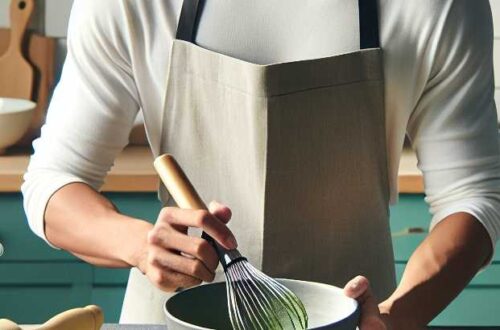Artisan Sourdough Bread Recipe

Choosing the right flour for sourdough bread
Title: A Dough-lightful Guide on Choosing the Right Flour for Sourdough Bread
Oh, the sourdough! A level up from the basic loaf and the caped crusader of the baking world, challenging yet somehow harmless. This scrumptious and crusty bread has recently risen to Internet fame, gracing our Instagram feeds with its bubbly personality and artistic scoring. This burly, bout-yeasted friend with the stomach-rumbling aroma and tangy taste tantalizes our taste buds like no other. However, kneading this temptress is not a crumb’s game, especially when it comes to choosing the right flour.
Choosing the right flour for sourdough is the equivalent of choosing the perfect dance partner; the right one can lift you to celestial heights, the wrong one can bring your twirls to a grinding halt.
First in our flour lineup is the strong and sturdy, Bread Flour. The heavyweight champion of the flour world with its protein content punching in around 12-14%. Armed with a higher gluten content, it pulls no punches when it comes to providing your sourdough with unparalleled structure and chewiness. If you’re desiring a loaf that flexes its gluten strands like a bodybuilder showcasing his six-pack, then bread flour is your number one sparring partner.
Next on stage is the quiet but reliable, All-Purpose Flour. Often overlooked in favor of its brawnier cousin, this humble bag of white gold with a protein content of 10-12% is the perfect blend of manageable and hearty.
“The administration was properly organized, commerce was encouraged, and agriculture flourished”
~ Nevill Forbes, Arnold J. Toynbee, D. Mitrany, D.G., The Balkans
It’s the Marianne of flour (forgive the Little Women reference), practical yet lovable. It offers a mellow, softer version of the mighty sourdough loaf, making it dough-lightful for a newbie’s nervous hands.
Splashing some color into our flour power scale is Whole Wheat Flour. This mama bear of flours, with all her rough and tumble grains, lends a heartier, nuttier flavor to your sourdough. Enriched with fiber, it’s a loved gift from nature to the health-conscious bakers, but keep this little nugget in mind—her wild, wheaty romance can be heavy business for your sourdough, causing the rise to be lower. The trick to taming this beast is blending it with some light-hearted all-purpose flour, creating a delectable balance of tastes.
Ah, Rye Flour, the surprise party in a bag! When you’re tired of the same ol’, same ol’, this flour, with its unique, slightly sour and earthy tones, will jazz things up for your plain Jane sourdough. It’s the pizazz that kicks your bread into a different flavor universe, but remember, it’s a diva. Its gluten-forming ability is less than wheat, so courting it requires some all-purpose or bread flour to stabilize the relationship.
Choosing the right flour for sourdough requires understanding both your bread’s needs and your tantalizing taste desires. It’s all about fostering a relationship between yeast, flour, and water—a “througheaven” of ingredients that, with a little patience and understanding, can bake it through the best and worst of ovens.
From the sturdy bread flour to the mild all-purpose, the hearty whole wheat to the quirky rye, remember you’re not stuck with one. Mix and match those dancing partners to create the perfect sourdough ballet that will make your taste-buds dance the night away!
So, fellow dough whisperer, bundle up to this flour power and start a scrumptious love affair with your sourdough. It’s time to stop loafing around and get that baker’s apron on!

Understanding the sourdough fermentation process
Title: Bubbling Up: A Light-hearted Dive into the Sourdough Symphony
If there’s one thing that can really rise to an occasion – it’s sourdough bread. It is quite like the Cinderella of the bread world – only to turn into a bewitching beauty overnight. As tempting as this alchemical transformation is, sourdough bread doesn’t sprout from a packet yeast. Oh no, it’s a fermentation fiesta! So, buckle up for an appetizing and rollicking journey through the fermenting fiasco that makes sourdough the King, Queen, and open-faced sandwich jester of crusty loafs.
From your rookie baker to your big-shot patisserie chef, everyone talks about the ‘sourdough starter.’ This starter or ‘mother,’ as it is affectionately called (hey, it does give birth to all those fluffy loafs, right?), is a cocktail of wild yeast and symbiotic bacteria. Folks, that key word is ‘wild.’ We’re dealing with the badass yeasts, the yeast that doesn’t play by the rules, the ones that put the ‘sour’ in your ‘dough’.
Imagine yeast and bacteria throwing their own microscopic version of a Coachella. The yeast, being the sugar-loving party animals they are, devour sugar, and in their gleefully intoxicated state, produce not music, but alcohol and carbon dioxide. The carbon dioxide, having nowhere else to go, creates pockets in the dough causing it to rise and giving it that airy, open texture.
The bacteria, on the other hand, are the straight-laced, responsible partygoers. They turn the alcohol produced by the yeast into organic acids (like a keg stand for microbes), giving your sourdough its iconic tart flavor. Lactobacillus Sanfranciscensis, the bacteria’s fancy nomenclature, lives up to its name with the pride and skill of a San Francisco sourdough chef.
If you want your sourdough to start rising to the occasion, it’s a waiting game – a process that could take anywhere from a few hours to a full day. But patience is key.
“A few extracts from notes to Mr. Hogg will show the labour, suffering, and worry which this state of chaos entailed:–“My dear Sir,–It is useless to trouble you with the _ins_ and _outs_ of the process–the result is, that, working through most part of the night, I have not yet come to the missing copy”
~ Henry Curwen, A History of Booksellers, the Old and the New
You thought you were making bread, but really, you’re conducting a biological orchestra. It’s Beethoven meets Bakerman.
Just like how one must let wine breathe and cheese mature, the sourdough needs to rest. You’ve got to give it time to perfect those wild yeast jives, bacteria boogies and to compose the symphony of flavors. It’s this rest period, or ‘bulk fermentation,’ that allows all these processes to happen.
And the bit about temperature? Yeast beings are like Goldilocks – they want it just right. A/C blasting like the Arctic or heating on like the Sahara will cause your yeast to throw a fit. Ideally, a mild 70-75 degrees Fahrenheit (21-24 Celsius) will have them partying like it’s 1999!
Finally, the master baker will use their Jedi instincts to know when the dough has doubled in size, because folks, this ain’t gonna happen with a clock. And when perfect, into the oven she goes. What emerges is a rustic, tangier, naturally leavened counterpart to the mundane store-bought loaves.
So, there you have it, yeasty boys and girls – a yeast-eye view of the fermentation fiasco that gifts us sourdough. It’s more science experiment than bread making, more symphony than snack. But once you’ve heard this overture of flavors, textures and aromas, you’ll never want to settle for less than sourdough.





